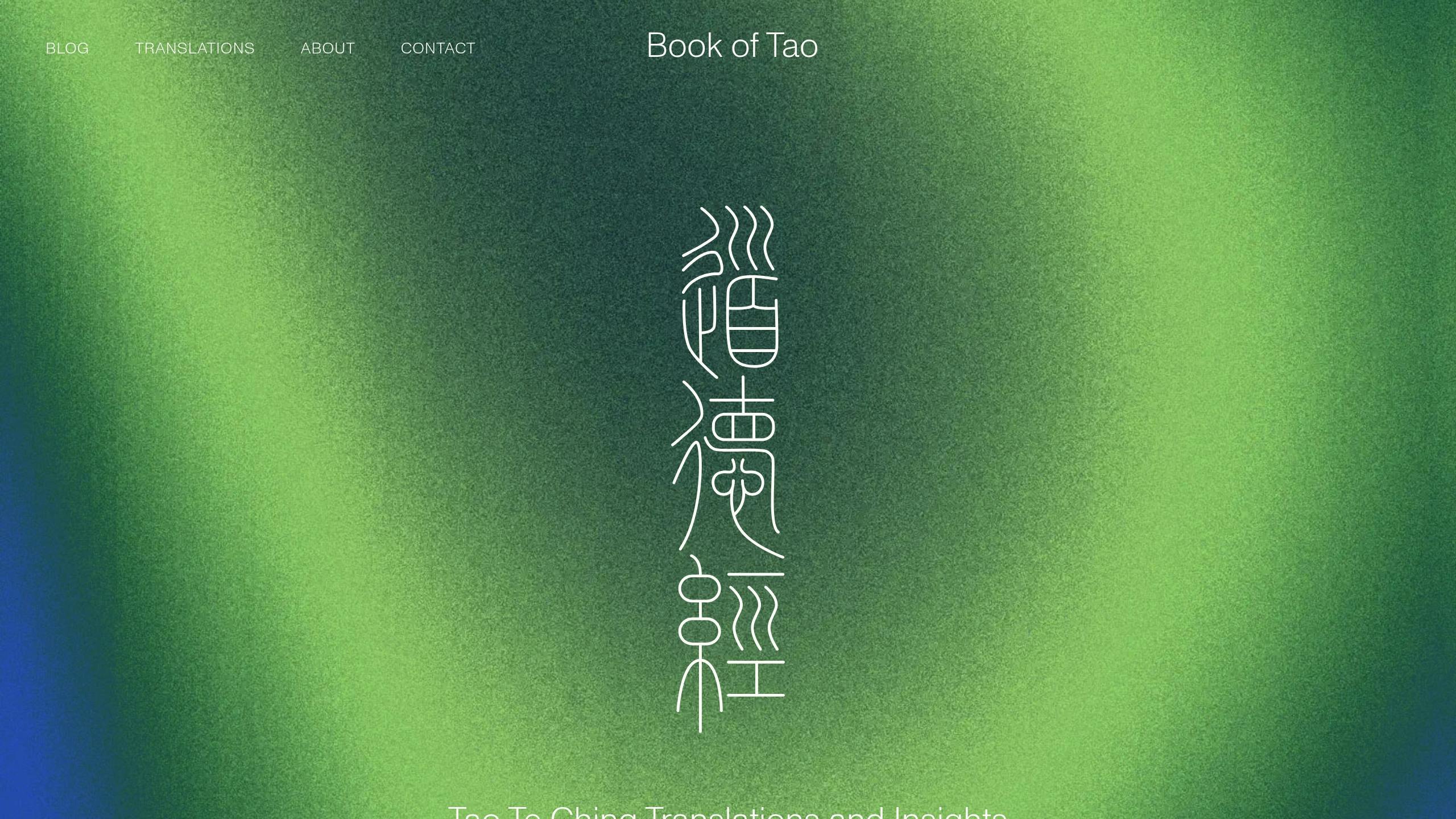The I Ching, or "Book of Changes", is an ancient Chinese text used for decision-making and self-reflection. It combines symbolic insights with practical strategies to help you approach personal and professional choices thoughtfully. Here's a quick guide:
- Set Up Your Reading: Prepare a quiet space, phrase open-ended questions, and gather tools like coins and a notebook.
- Create Your Hexagram: Toss coins to generate six lines representing your situation, forming a hexagram.
- Interpret the Hexagram: Analyze the symbols and changing lines to understand inner and outer influences.
- Apply the Guidance: Combine symbolic insights with logic to create actionable steps.
- Learn and Reflect: Deepen your understanding of the I Ching through practice and study.
Quick Summary Table
| Step | Key Action | Tools Needed |
|---|---|---|
| Set Up Your Reading | Create the right environment, ask questions | Coins, notebook |
| Create Hexagram | Toss coins to form hexagram lines | Coins |
| Interpret Hexagram | Analyze symbols and changing lines | I Ching text |
| Apply Guidance | Combine insights with practical analysis | Decision framework |
| Learn and Reflect | Study Taoist principles and past readings | Study materials |
The I Ching is not about predicting the future but fostering clarity and reflection. Use it to uncover new perspectives and make balanced decisions.
How to Cast the I Ching Coins: A Step-by-Step Guide
Step 1: Setting Up Your I Ching Reading
Creating the right environment and mindset is key to getting the most out of your I Ching reading. This preparation lays the groundwork for a meaningful experience and thoughtful interpretation.
Preparing Your Space
Your surroundings play a big role in your ability to focus. Pick a quiet spot where you can avoid interruptions. A well-prepared space helps you stay calm and centered during the reading .
| Key Elements for Your Space | Why They Matter |
|---|---|
| Clean, uncluttered surface | Helps clear your mind |
| Soft or natural lighting | Sets a soothing tone |
| Comfortable seating | Keeps you physically at ease |
| Natural accents (plants, water) | Builds a connection to nature |
| Limited technology | Reduces distractions |
Gather the essentials: your I Ching text, three coins, and a notebook to jot down your thoughts. Some suggest facing east while consulting the I Ching, as this direction is tied to new beginnings in Chinese philosophy .
Crafting Your Questions
The way you phrase your question shapes the insights you'll receive. Open-ended questions work best, encouraging thoughtful reflection rather than simple yes/no answers. Aim to explore possibilities and gain deeper understanding. For example:
| Common Question | Improved Version |
|---|---|
| "Will I get the promotion?" | "How can I best prepare for this career opportunity?" |
| "Should I move cities?" | "What factors should I consider in this relocation decision?" |
| "Is this the right investment?" | "What aspects of this investment need my attention?" |
Spend a few minutes meditating or practicing deep breathing to clear your mind. Write your question in your notebook - this not only clarifies your thoughts but also creates a record of your journey with the I Ching . Once your question is ready, you can move on to creating your hexagram.
Step 2: Creating Your Hexagram
Once you've settled on your question, it's time to create your hexagram. Each line you generate carries specific meaning.
Coin Method Steps
You'll need three coins - any type will work.
| Step | Action | Meaning |
|---|---|---|
| Assign Values | Heads = 3, Tails = 2 | These values determine the line type |
| Sum Range | Total: 6–9 | Each total corresponds to a specific line type |
| Line Types | 6 = Changing yin (broken line with an X in the center) | Indicates transformation |
| 7 = Stable yang (solid line) | Represents steady energy | |
| 8 = Stable yin (broken line) | Reflects receptive energy | |
| 9 = Changing yang (solid line with a circle in the center) | Signals active change |
Here’s how to generate each line of your hexagram:
- Hold the coins, focus on your question, and gently shake them.
- Toss the coins onto a flat surface.
- Add up the coin values.
- Record the line type based on the sum.
- Repeat this process five more times, creating the hexagram from the bottom line upward.
If coins aren’t your preference, there are other methods to consider.
Choosing Your Method
The coin method is simple and widely used. Many prefer it for its balance of speed and tradition .
| Method | Time Needed | Best For | Difficulty |
|---|---|---|---|
| Coin Method | 5–10 minutes | Quick decisions, beginners | Easy |
| Yarrow Stalk | 20–30 minutes | In-depth reflection, purists | Complex |
| Digital Apps | 1–2 minutes | Fast answers, modern users | Very Easy |
Whichever method you choose, sticking with it helps you build a deeper connection with the process.
Step 3: Reading Your Hexagram
Lines and Symbols
To interpret your hexagram, remember this: the lower trigram represents your inner state, while the upper trigram reflects external conditions. If there are changing lines, they highlight shifts that lead to a secondary hexagram, offering a glimpse into potential developments . Understanding these symbols helps you connect ancient wisdom to today's decision-making.
Modern Applications
Take the hexagram 'the well' as an example - it can symbolize reliability or consistent support . By focusing on the core themes of traditional symbols, you can use systems thinking to recognize patterns and combine these insights with practical considerations . This approach helps you weigh your options and take action with more confidence.
When interpreting changing lines, try crafting a story that connects your current hexagram (the primary one) to the possible future suggested by the secondary hexagram .
For tough decisions, keeping a decision journal can be helpful. In it, you could jot down:
- The hexagram number, which outlines the main theme of your situation
- Key changing lines that signal areas of transformation
- The secondary hexagram, which offers a view of possible outcomes
- Personal thoughts on how the reading relates to your situation
This practice can help you track patterns and refine your understanding over time.
sbb-itb-4c1eb9b
Step 4: Using I Ching Guidance Wisely
Combining Logic and Insight
Think of the I Ching as a tool to spark insight. Start by recording the symbolic guidance it offers, then analyze practical elements that could shape your decision . This blend of ancient wisdom with modern analysis strengthens the approach outlined earlier.
A useful way to bring these elements together is through a decision framework:
| Aspect | I Ching Insight | Practical Consideration | Integrated Action |
|---|---|---|---|
| Timing | Hexagram suggests patience | Market conditions unfavorable | Delay launch while preparing |
| Resources | Indicates gathering support | Limited current budget | Seek partnerships or collaborations |
| Direction | Points to gradual progress | Competitive pressure present | Implement in phases |
The I Ching can help uncover perspectives you might miss. For example, if your practical analysis points to urgent action but hexagram 5 (Waiting) appears, pause to consider whether rushing could lead to overlooked details . This balanced method naturally supports setting boundaries in your decision-making process.
Setting Healthy Boundaries
It's just as important to decide when and how to use the I Ching. A structured approach could include:
Establish a consultation framework:
- Use the I Ching for major decisions only.
- Pair readings with hard data and expert opinions.
- Wait at least a week before revisiting the same question.
"I use the I Ching as a structured method to consider different angles of a problem and generate new ideas, much like how some use random word association in brainstorming sessions. It helps me think outside the box and consider perspectives I might otherwise overlook."
If the I Ching's guidance clashes with logical reasoning, don't jump to conclusions. Instead, dig into the contradiction. This exploration can often shed light on hidden assumptions or biases .
The I Ching isn't meant to predict the future but to encourage reflection. Its real value lies in challenging how you think . By setting clear boundaries, you can create a thoughtful decision-making process that merges ancient insights with practical strategies.
Step 5: Building I Ching Knowledge
Developing a solid understanding of the I Ching is key to applying its wisdom in everyday decisions.
Taoist Principles
To truly grasp the I Ching, it's important to familiarize yourself with its Taoist roots. One key concept is Wu Wei (non-action), which emphasizes going with the flow of natural rhythms instead of forcing outcomes. This perspective highlights the importance of timing and aligning with life's natural patterns when making choices.
Here are some essential Taoist principles and how they translate into practical use:
| Principle | Traditional Meaning | Modern Application |
|---|---|---|
| Yin and Yang | Complementary opposites | Finding balance among competing priorities |
| Qi (Life Force) | Vital energy flow | Evaluating where to focus your energy |
| Ziran (Naturalness) | Following true nature | Making choices that align with your core values |
For a deeper dive into these ideas, consider exploring additional resources.
Further Resources: Book of Tao

To enrich your I Ching practice, combine traditional teachings with modern perspectives. The Book of Tao offers accessible articles on Taoist philosophy and mindfulness, which can enhance your understanding of I Ching interpretations. Their translations of the Tao Te Ching provide helpful context for the philosophical ideas underpinning the I Ching.
Here are some effective ways to build your I Ching expertise:
-
Start with the basics
Begin with the Wilhelm/Baynes translation to understand the core concepts. Focus on mastering the eight trigrams and their elemental associations before tackling more complex readings. -
Engage with a community
Participate in study groups or online forums to exchange interpretations and gain new perspectives. -
Reflect on your readings
Regularly review your past readings to spot patterns and improve your understanding over time.
Expanding your knowledge of the I Ching helps you make more thoughtful and informed decisions.
Conclusion
The I Ching provides a structured approach to thoughtful decision-making. By following the outlined 5-step process, you can uncover deeper insights while staying focused on practical considerations.
Start by revisiting the preparatory steps discussed earlier. The process of interpreting hexagrams combines symbolic meaning with actionable steps, helping you connect deeper understanding to real-life decisions.
Here’s how consistent practice can sharpen your decision-making skills:
| Benefit | How It Helps in Modern Life |
|---|---|
| Structured Reflection | Encourages deliberate thinking instead of impulsive reactions |
| Multiple Perspectives | Helps uncover hidden aspects of complex situations |
| Intuitive Development | Bridges logical reasoning with intuitive understanding |
| Mindful Awareness | Encourages staying present during important decisions |
Blending symbolic insights with practical judgment is key. Applying the 5-step process regularly enhances your ability to approach difficult decisions with clarity and balance.
"The I Ching process can be seen as a form of mindfulness practice, encouraging users to pause and reflect before making important decisions".
FAQs
What is the I Ching used for today?
The I Ching helps with decision-making and personal growth in modern times. A 2019 survey by the American Taoist Association found that 32% of participants consult it monthly .
Here are some of the main ways it's used today:
| Application Area | Common Uses | Outcomes |
|---|---|---|
| Personal Growth | Career decisions, relationship advice | Encourages reflection, reduces impulsive actions |
| Business | Strategic planning, solving challenges | Promotes diverse viewpoints |
| Creative Work | Finding inspiration, overcoming blocks | Boosts intuitive thinking |
| Life Transitions | Managing big life changes, making key choices | Provides a balanced decision-making process |
These examples show how the I Ching fits into various aspects of modern life.
Its effectiveness lies in combining a structured approach with intuitive insights. While scientific studies on the I Ching are scarce, some research highlights its role in improving decision-making and minimizing cognitive biases . The process of consulting the I Ching often aligns with mindfulness practices, encouraging thoughtful reflection before making significant decisions.
Tips for effective use:
- Ask open-ended questions .
- Pair I Ching insights with practical analysis .
- Focus on the guidance's essence rather than rigid interpretations .
Interestingly, even business leaders see its value. A 2021 study found that 18% of surveyed executives incorporate I Ching consultations into their strategic planning . If you're curious about Eastern philosophy, exploring resources on the I Ching could be a great starting point.






